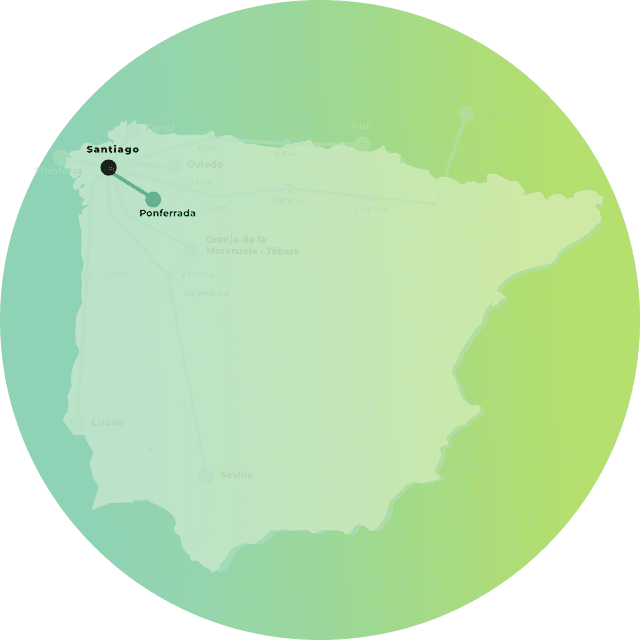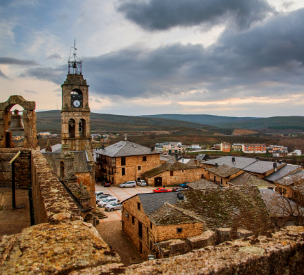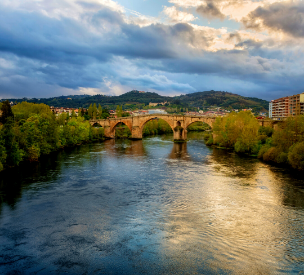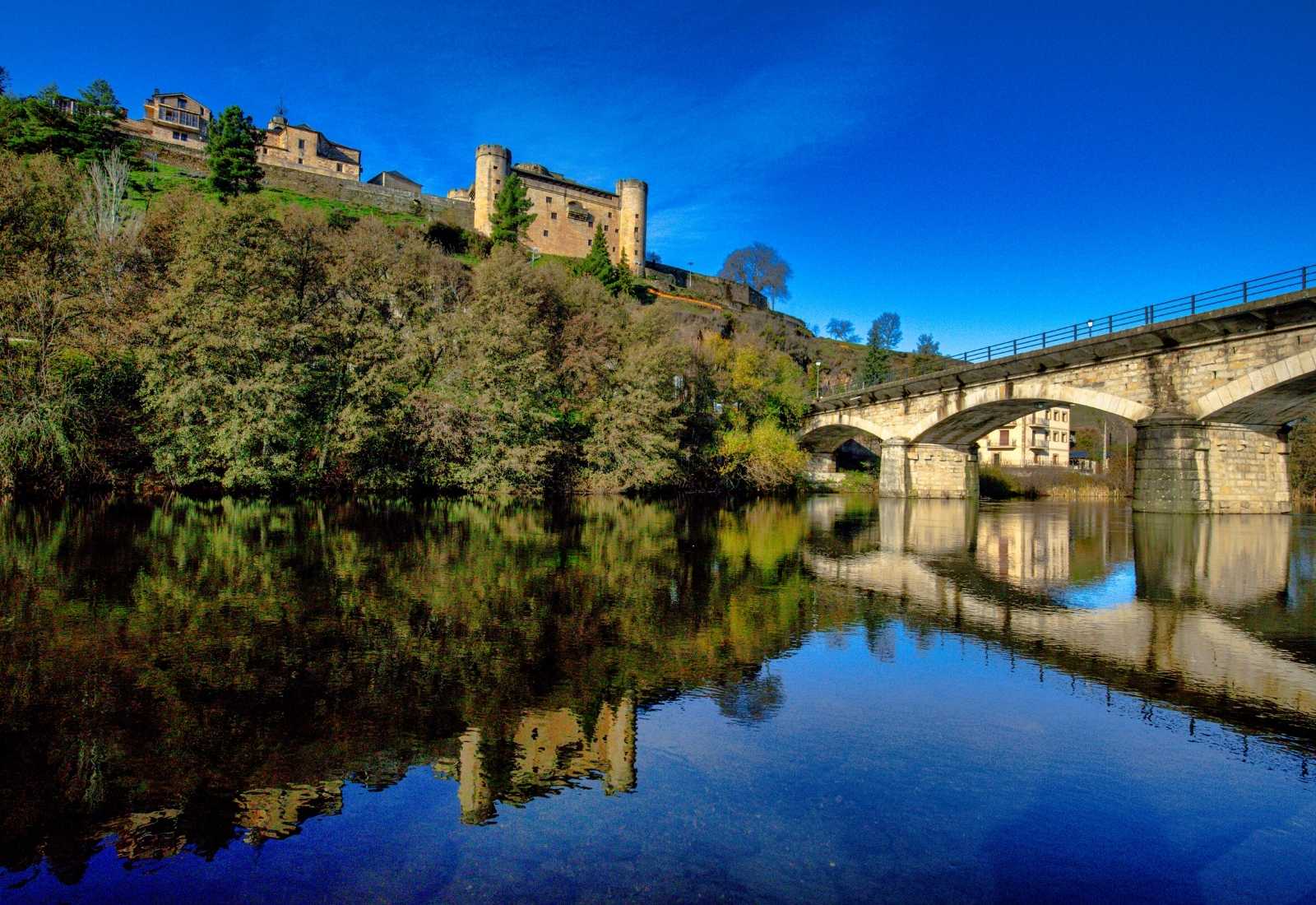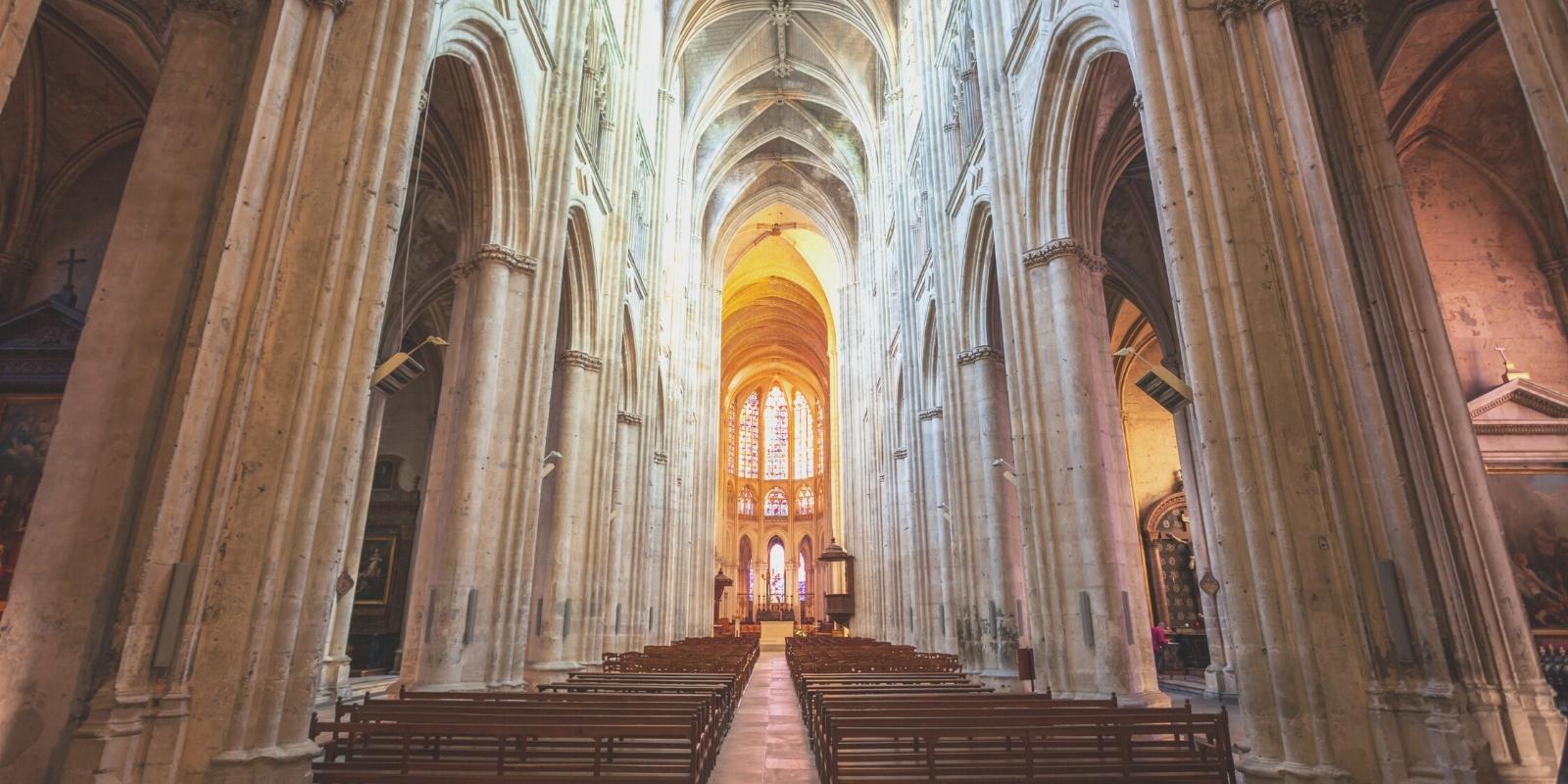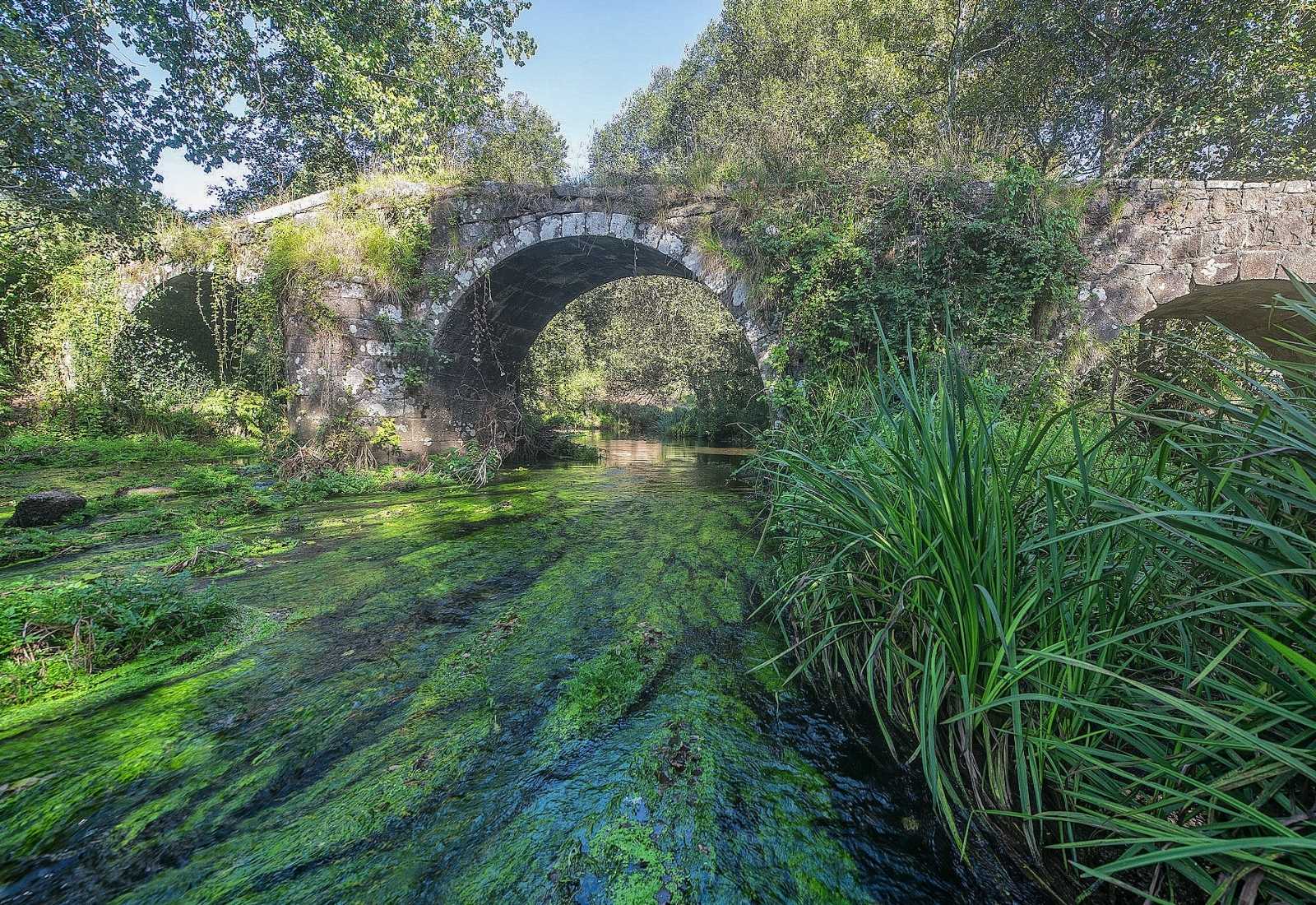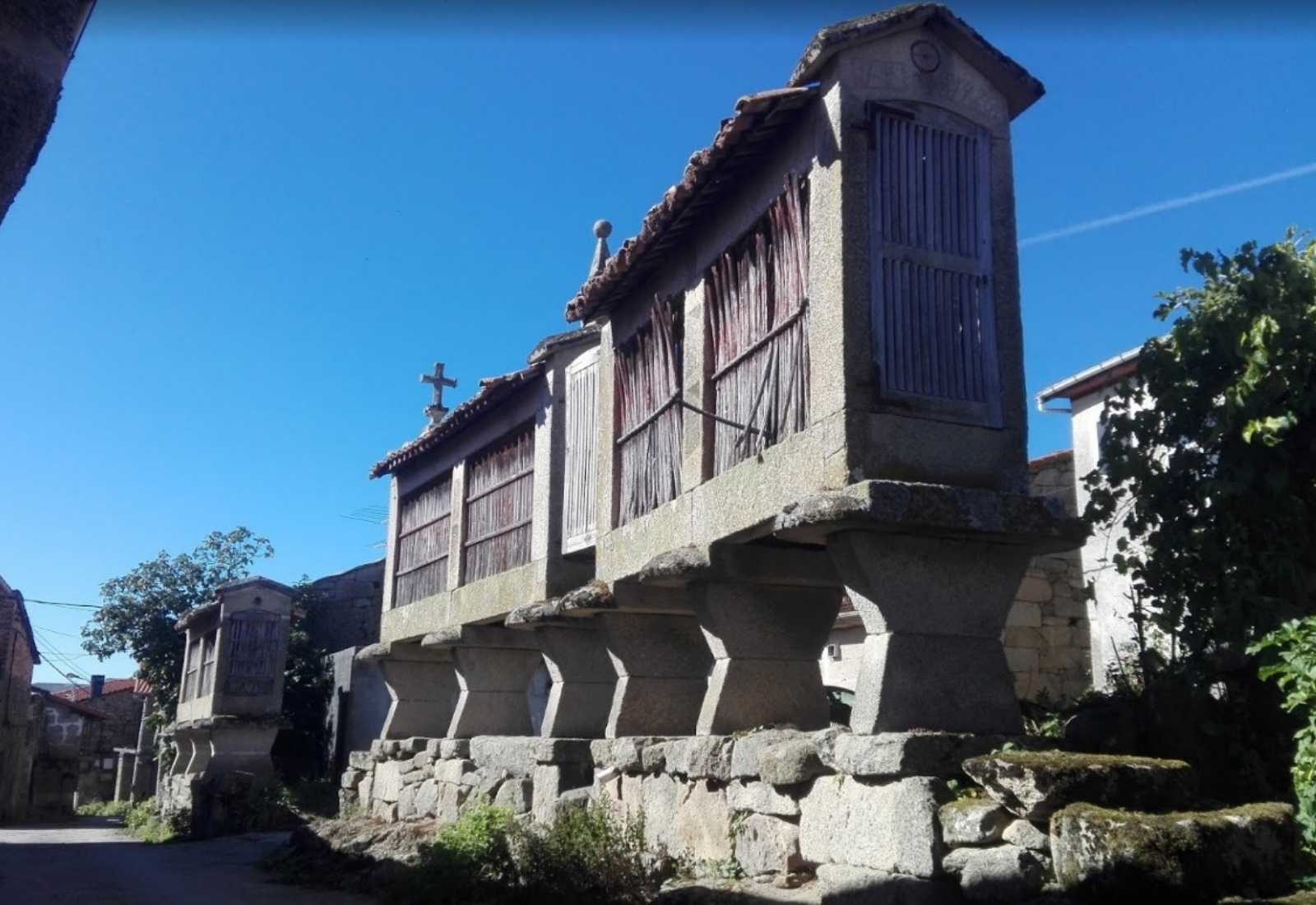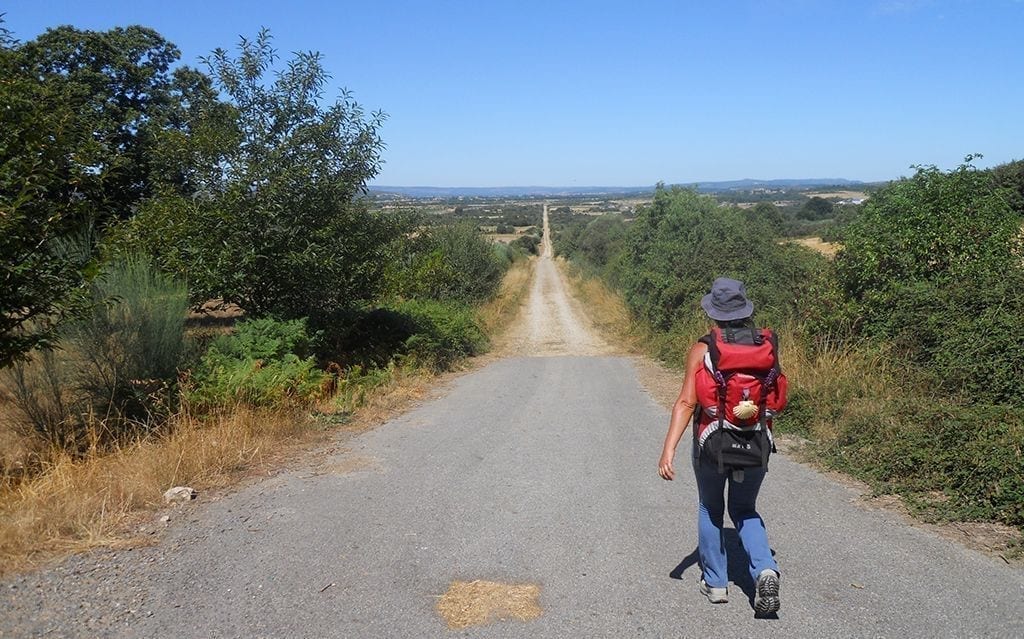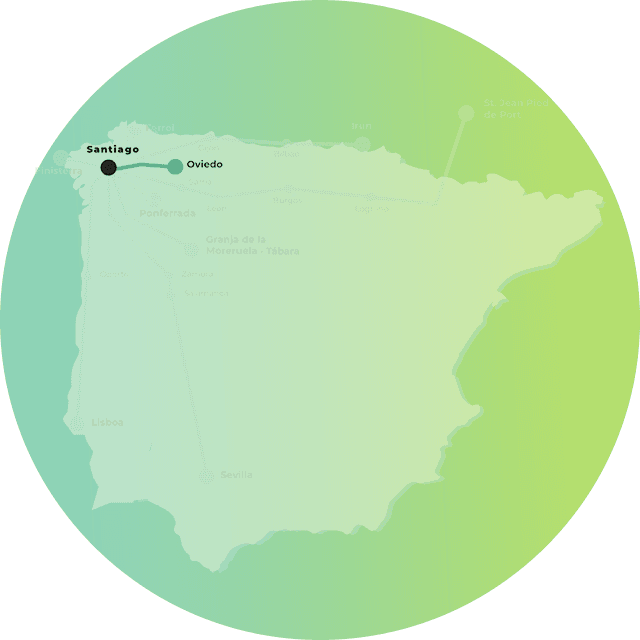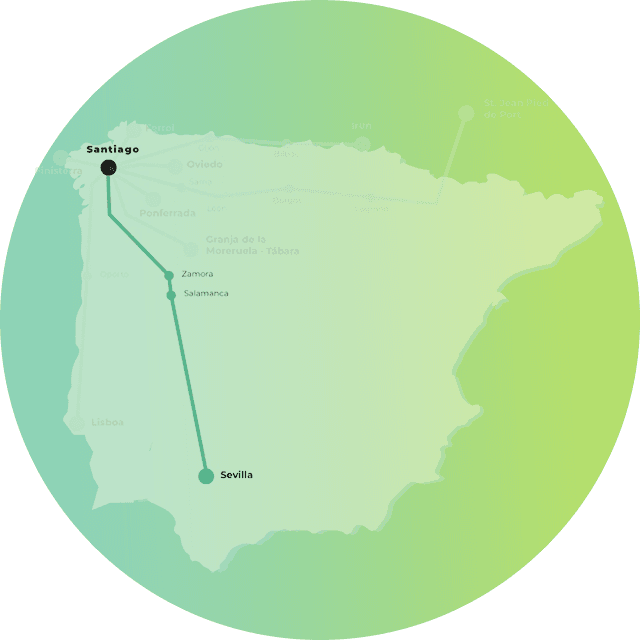The Sanabrés Route of the Camino de Santiago
The most fascinating and least known route of the Camino de Santiago.
Among the various routes of the Camino de Santiago, this one has a unique character. Although less known and traveled than other routes, the Camino Sanabrés offers a special experience for pilgrims seeking tranquility and a connection with nature, away from the hustle and bustle of the more popular routes.
The Camino Sanabrés stands out for its historical significance, as it was part of the ancient communication routes used since Roman times, adding deep cultural value to every step. This route is ideal for pilgrims who seek not only to reach the spiritual goal in Santiago but also to enjoy an intimate and reflective experience.
Services we offer on the Sanabrés Route
Included in all our routes
- Accommodation booking selecting the best lodgings according to your budget.
- Luggage transport between stages.
- Practical information about the Camino in a detailed guide.
- Phone assistance en route we’re by your side for any questions or incidents.
- Travel insurance with broad coverage.
On group tours
- Accompanying guides professional support throughout the Camino.
- Support vehicle available during the stages.
Optional services
- Meals and diets: option to add breakfasts or half board.
- Private transfers to/from the point you need.
- Bicycle rental (mountain or electric bikes).
Map of the Sanabrés Route
The map illustrates the complete route of the Sanabrés Route of the Camino de Santiago, which begins in Granja de Moreruela, in the province of Zamora, and culminates in Santiago de Compostela, in Galicia. This historic route, approximately 365 km long, passes through picturesque towns and cities such as Puebla de Sanabria, A Gudiña, and Ourense.
At the bottom, the elevation profile of the Camino Sanabrés is displayed, highlighting its characteristic slopes and notable ascents, such as the Sierra de la Canda and the Alto de Allariz, which offer breathtaking panoramic views. Each stage of this less-traveled route provides a unique experience, with landscapes ranging from green valleys to Galician mountains, as well as a cultural and natural heritage that makes this journey an intimate and enriching experience, both spiritually and physically.
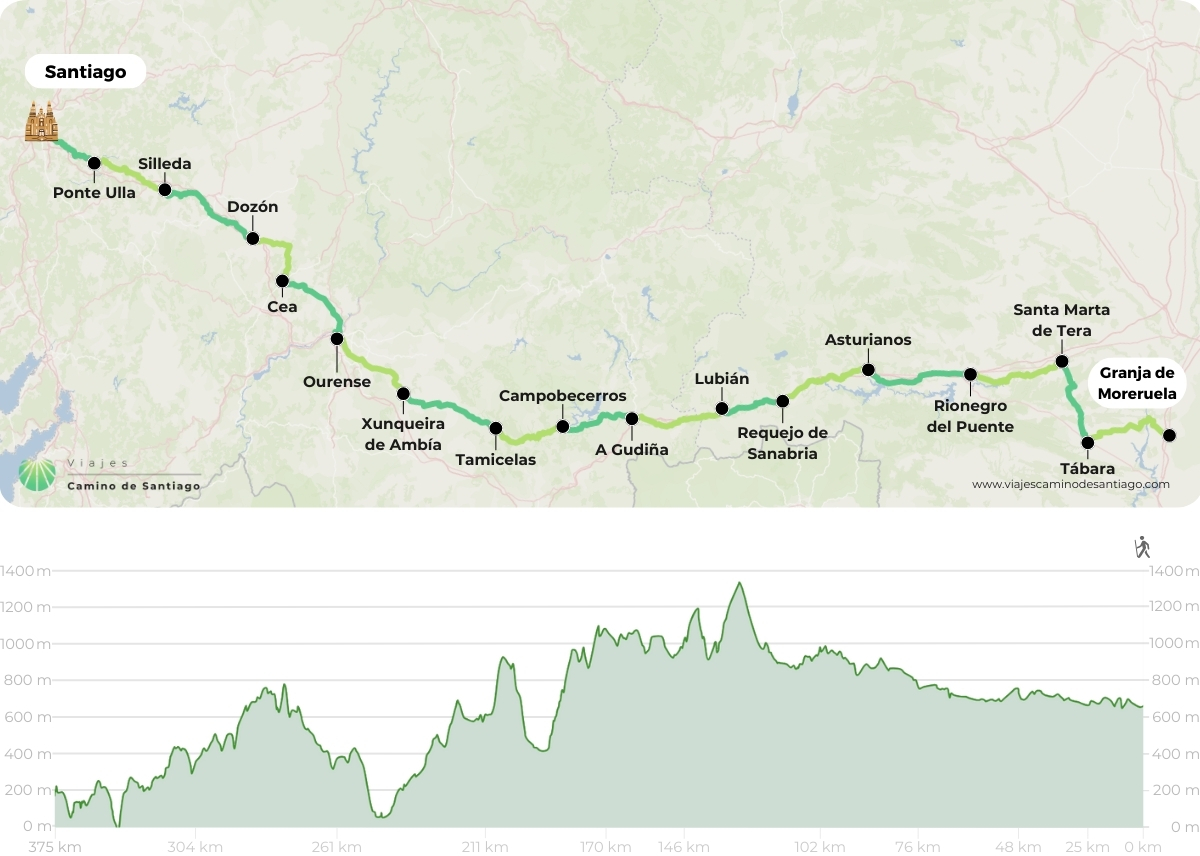
Information about the Sanabrés Route
Why choose the Sanabrés Route?
A route with an enviable environment for introspection.
Although the Sanabrés Route is a continuation of the Vía de la Plata, today we can consider it a Camino on its own. A fascinating route through an enviable natural environment, full of contrasts and idyllic landscapes, with mild temperatures in spring and autumn. A solitary path, far from the overcrowding and incessant clattering of pilgrims on other routes. One could say that the Sanabrés route still retains the Jacobean essence that many pilgrims seek on the Camino de Santiago. Today, despite having fewer services than other routes, it offers enough hostels and is very well marked.
What to see and do on the Sanabrés Route of the Camino de Santiago?
The beauty of the Sanabria region and the authenticity of the Ourense carnivals.
Where to start the Sanabrés Route?
From Puebla de Sanabria.
The Sanabrés Route begins in the Zamoran town of Puebla de Sanabria, permanently leaving the Vía de la Plata until reaching Santiago de Compostela. The Sanabrés Route, or the Vía de la Plata from Puebla de Sanabria to Ourense, is divided into 10 stages, covering about 250 km (via the Laza variant), and crosses part of the Castilian plateau before entering the mountainous terrain typical of the Galician landscape.
From Ourense.
But if we don’t have enough time to complete the entire route, we can start the Sanabrés Route or Vía de la Plata from Ourense, with a total of 110 kilometers to Santiago de Compostela. This last section can be completed in 5 stages, which we can finish in just one week.
Stages of the Sanabrés Route
The Sanabrés Route is a Jacobean path full of charm, history, and tranquility, ideal for those seeking a more intimate and less crowded experience. This itinerary, approximately 365 kilometers long, begins in Granja de Moreruela and ends in Santiago de Compostela, passing through spectacular landscapes, picturesque towns, and a rich cultural heritage. Each stage surprises with its diversity, from the Zamora lands to the green mountains of Galicia, passing through gems such as Puebla de Sanabria and the spa town of Ourense. Through this route, you will discover the main stages, distances, points of interest, and practical tips to fully enjoy this unforgettable adventure.
The towns of the Sanabrés Route
History of the Sanabrés Route
A route originated not only by pilgrimages, but also as a connection with the south of Spain and the transit of day laborers and goods.
Origins
The origin of the Sanabrés itinerary goes hand in hand with the Vía de la Plata, which ascended from the south of Spain, and with a whole series of small pilgrimages and religious journeys that headed toward a dense network of monasteries that emerged based on Mozarabic repopulation and were located in the province of Zamora, right at the origin of the Sanabrés Way.
A succession of monasteries and hospitals for travelers…
A few kilometers from Granja de Moreruela, the starting point of this route, we find the Cistercian monastery of Santa María de Moreruela, the oldest in Spain, and known until the year 1163 as Santiago de Moreruela. In its remains, one can still see the Pilgrim’s gate and fountain. 25 km away, in Tábara, there was the Mozarabic monastery of San Salvador. The same was true in Santa Marta de Tera, a town that emerged alongside the abbey of Santa Marta de Riba de Tera. In Rionegro del Puente, at the foot of the sanctuary of the Virgin of the Caraballeda, the Brotherhood of the Falifos was founded in the 14th century (still active), a historic hospital institution that some scholars place among the first on the Camino de Santiago.
In San Martín de Castañeda, a town located above Lake Sanabria, the monastery of Santa María was built in the 10th century. Already in Galicia, next to the collegiate church of Santa María la Real de Xunqueira de Ambía, there was a pilgrim hospital. There is also evidence of various hospitals in Verín, Monterrei, Allariz, and Ourense. There is no doubt that a route was traced between all these religious centers and that, thanks to the signs of hospitality found along the way, it eventually became another Camino de Santiago.
…and for goods and farmers
But the Sanabrés route was not only traveled by the faithful and devout; many travelers used this road to connect remote places in the center of the peninsula with the north of Spain. Its paths were used as royal drovers’ roads and routes for merchants from all over the country. Galician farmers used this route to descend to Castile during the harvest season, also using its hospitals, hostels, temples, and monasteries.
Frequently asked questions about the Sanabrés Route
On the Camino Sanabrés, although it is not as busy as other routes of the Camino de Santiago, it is highly recommended to book in advance, especially during the high season (spring and summer) or important festivities. The infrastructure of hostels and accommodation has improved in recent years, but in some rural sections accommodation is limited and the distances between them can be long.
The Sanabrian Way is a route of the Camino de Santiago with about 365 km divided, generally, in 13 stages. Therefore, divided like this, it takes 13 days to complete the Camino de Santiago Sanabrés walking.
Each stage would be the distance you walk in one day, from the starting point to the end of the walk, where you will spend the night. The stages can vary in distance and difficulty, and it is important to note that they can be adjusted according to your pace and physical condition. Some pilgrims choose to divide certain long or hard stages, or lengthen those that are shorter or easier to walk. It all depends on having a place to sleep.
The Sanabrés Way presents a medium level of difficulty, with some challenges that pilgrims should be aware of. Throughout its 365 kilometres, from Granja de Moreruela to Santiago de Compostela, the main challenges include:
- Steep gradients: Especially in the stages that cross Galicia, the Camino Sanabrés has several ups and downs, as in the stretch to A Gudiña and the climb after Oseira, which can be demanding for walkers.
- Long stages: Some stages of the Camino Sanabrés are longer and have fewer intermediate accommodation options, which requires good planning and physical endurance. It is important to manage stops and rests well.
- Infrastructure: Although the Camino Sanabrés is less travelled than other routes of the Camino de Santiago, its infrastructure has improved in recent years. However, in certain rural sections, services such as hostels and shops may be less frequent.
- Weather: Depending on the time of year, pilgrims may face variable weather conditions, especially in Galicia, where rainfall is common, which can make the roads slippery and more difficult to walk.
The Sanabrés Way is a route that crosses some of the most rural and authentic regions of Spain. Starting in the region of Sanabria (Zamora), it passes through the provinces of Ourense, Pontevedra and A Coruña on its way to Santiago de Compostela.
The route of the Sanabrés Way offers a wide variety of landscapes, from the vast Castilian plains to the lush Galician forests. Highlights include the historic city of Ourense, famous for its hot springs. Along the way, pilgrims pass through small villages full of charm and heritage.
In terms of difficulty, the Sanabrés Way is considered of medium difficulty, with some stages a little demanding in Galicia due to the mountainous climbs and descents. However, its natural beauty, tranquility and rich history make it an ideal choice for those pilgrims seeking a more intimate and spiritual experience on their pilgrimage.
The Sanabrés Way is divided into 13 stages. It begins in Granja de Moreruela (Zamora) and has about 365 kilometres to Santiago de Compostela. Keep in mind that this distance may vary depending on the possible variants or complementary and alternative paths that the pilgrim decides to take during the route.
Each stage would be the distance you cover in one day, from the starting point to the end of the walk, where you will spend the night. The stages can vary in distance and difficulty, and it is important to note that they can be adjusted according to your pace and physical condition. Some pilgrims choose to divide certain long or hard stages, or lengthen those that are shorter or easier to walk. It all depends on having a place to sleep.
Posts related to the Sanabrian Way
Other routes of the Camino de Santiago
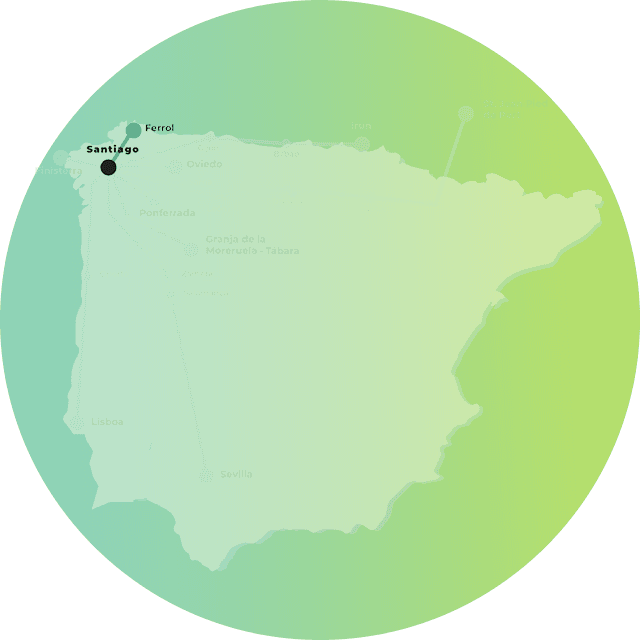
English Way
From Ferrol to Santiago de Compostela. Delve into the culture of villages of great military, naval and historical importance. 5 Etapas | 125 km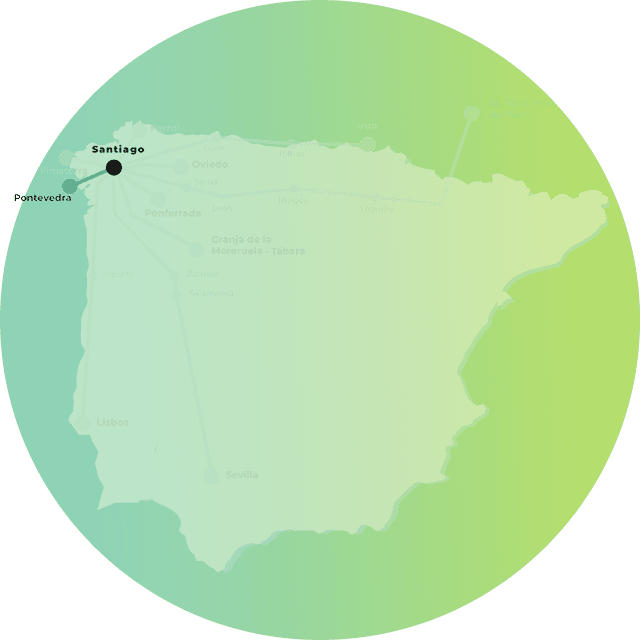
Father Sarmiento Way
The Father Sarmiento Way links Pontevedra to Santiago de Compostela, offering a scenic journey through beautiful landscapes. 6 stages | 142 km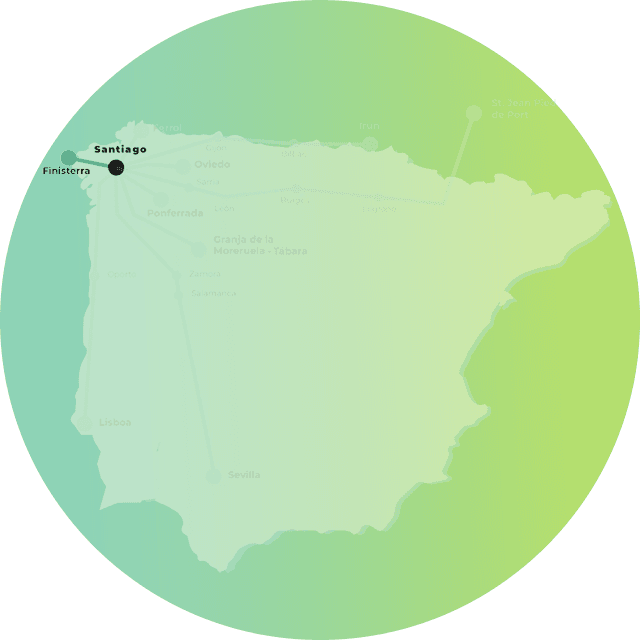
Finisterre and Muxía Way
From Santiago de Compostela to Muxía. A mystical and spiritual journey to the ends of the Earth 5 stages | 120 km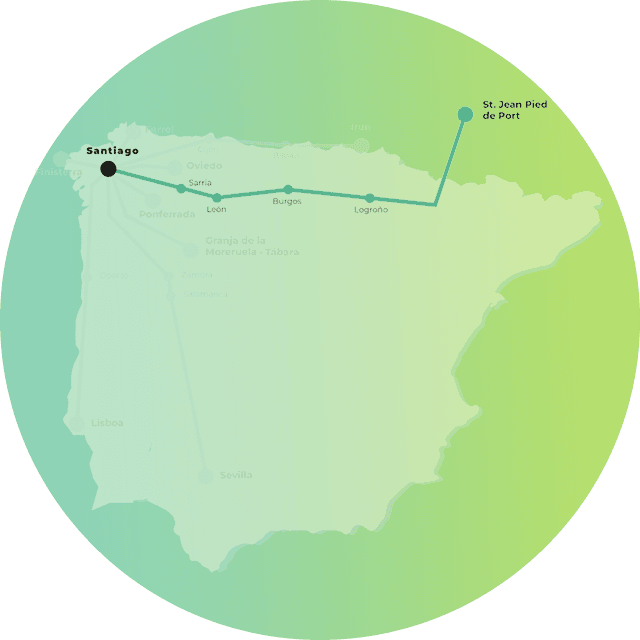
French Way
From Saint-Jean-Pied-de-Port to Santiago, trace Charlemagne’s path through the Pyrenees and trek 800 km on the French Way. 33 stages | 768 km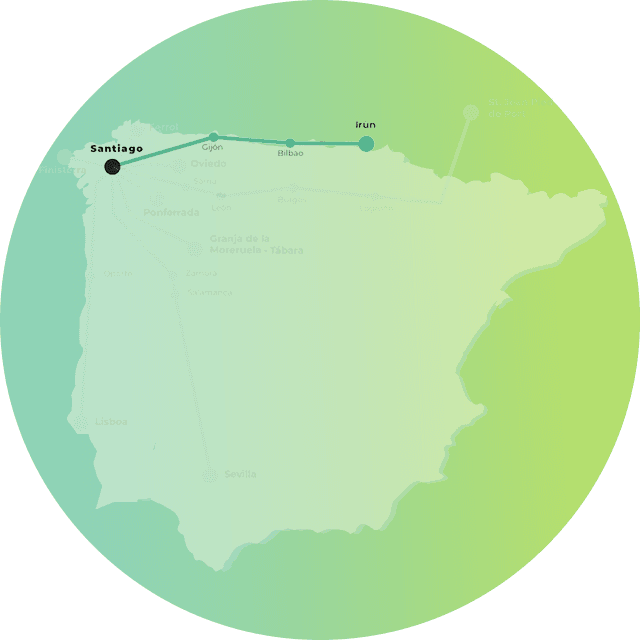
Northern Way
From Santiago de Compostela to Muxía. An unforgettable experience with breathtaking scenery 34 Stages | 820 km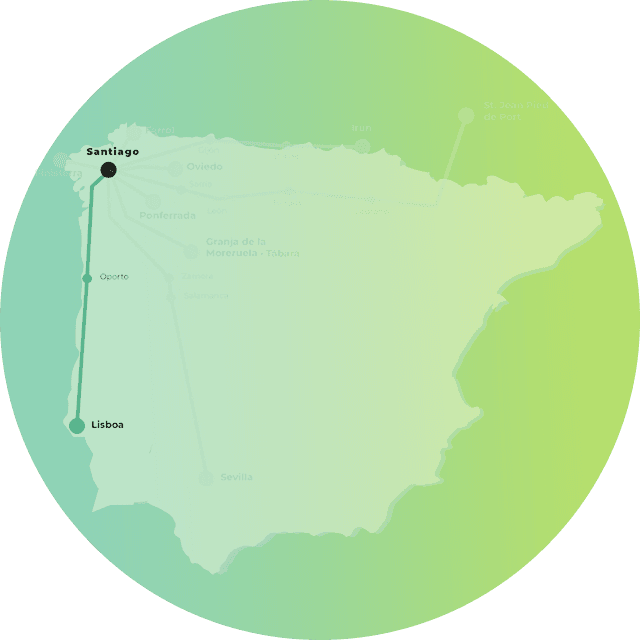
Portuguese Way
Starts in Lisbon and leads to Santiago de Compostela, offering a scenic journey through charming towns, coastal views, and culture. 27 stages | 620 km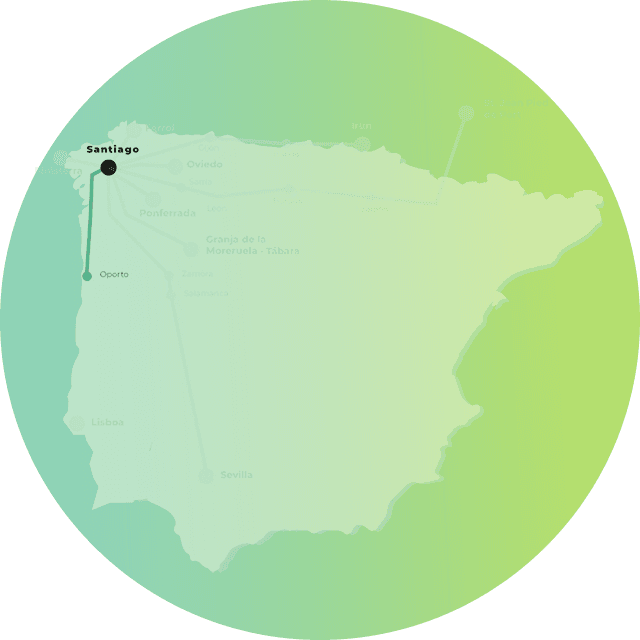
Portuguese Way along the coast
From Oporto to Santiago de Compostela. Total 194 km - 8 stages 8 Stages | 194 km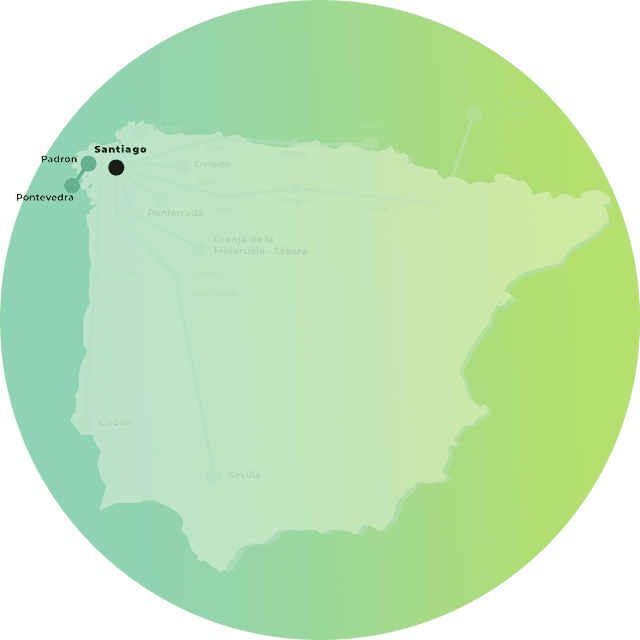
Portuguese Way: spiritual variant
From Pontevedra to Padrón. Total 81 km - 3 stages 3 stages | 81 km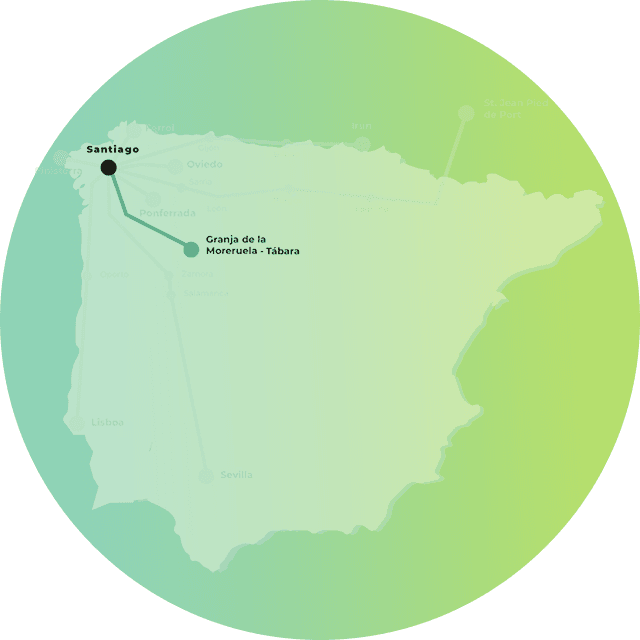
Sanabrian Way
From Granja de Moreruela to Santiago de Compostela. Total 365 km - 13 stages 13 stages | 365 km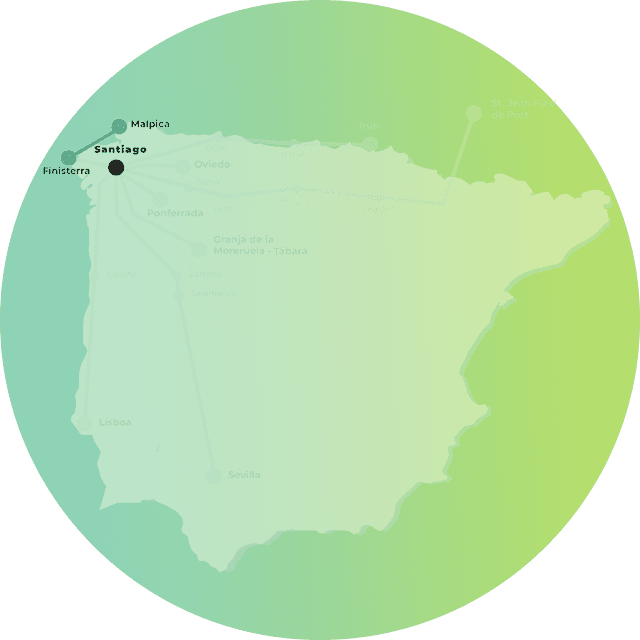
Way of the Lighthouses
From Malpica to Finisterre. A 200-kilometer journey along the coast and through the wildest of nature 8 stages | 195 km